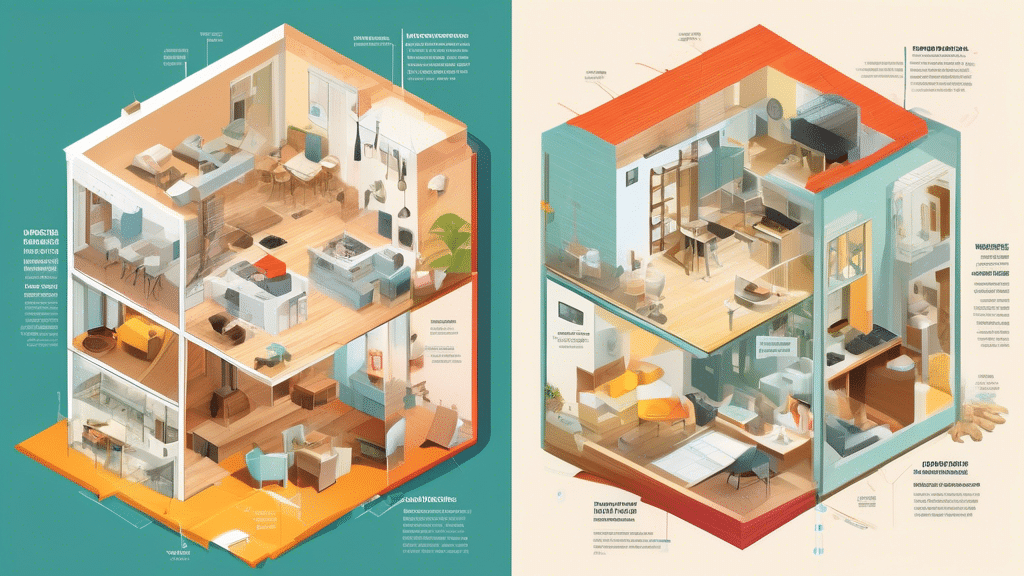Boosting Home Performance: A Guide to Energy Efficiency Upgrades
In the quest for a more sustainable and cost-effective lifestyle, enhancing your home’s energy efficiency is a vital step. An energy-efficient home not only reduces your carbon footprint but also significantly lowers your utility bills. Implementing strategic upgrades can transform your living space into a pinnacle of green living. In this guide, we’ll navigate the path towards boosting your home’s performance through targeted energy efficiency upgrades.
Understand Your Home’s Energy Use
Before embarking on any upgrades, it’s essential to understand your home’s current energy usage. Conducting an energy audit is a pragmatic approach to identify areas that require improvement. This audit can pinpoint where your home is losing energy and recommend customized solutions to enhance efficiency. Whether it’s outdated HVAC systems or insufficient insulation, understanding these key areas provides a roadmap for impactful upgrades.
Seal and Insulate
The cornerstone of an energy-efficient home is effective insulation. Proper sealing and insulation can dramatically reduce heating and cooling costs, the largest energy expense in most homes. Focus on attics, basements, and crawl spaces, as these are the areas prone to significant energy loss. High-quality insulation materials and sealing leaks around doors and windows can make a substantial difference in maintaining your home’s comfort and performance.
Upgrade to Energy-Efficient Appliances
Appliances account for a significant portion of your home’s energy consumption. Upgrading to Energy Star-rated appliances can lead to considerable savings over time. From refrigerators to washing machines, these energy-efficient models use advanced technology to minimize electricity use without compromising on performance. While the initial investment might be higher, the long-term savings on utility bills and the benefit to the environment make it a worthwhile investment.
Implement Smart Home Technology
Smart home technology offers a seamless way to enhance your home’s energy efficiency. Smart thermostats, for example, learn your heating and cooling preferences and adjust accordingly, ensuring optimal energy use. Similarly, smart lighting systems can regulate the use of lights based on occupancy or time of day, effectively reducing unnecessary energy consumption. Embracing these technologies can lead to a smarter, more efficient home.
Optimize Water Usage
Water heating is another major energy expense in most homes. Upgrading to a tankless water heater or an energy-efficient model can significantly reduce energy consumption. Additionally, implementing low-flow fixtures in showers and faucets can conserve water and lower heating costs. These upgrades not only save energy but also contribute to water conservation efforts.
Invest in Renewable Energy
For those looking to take a giant leap in energy efficiency, investing in renewable energy sources like solar panels is a game-changer. Solar energy can potentially cover all your electrical needs, drastically reducing your reliance on the grid and lowering your energy bills. Moreover, tax incentives and rebates available for solar installations make it an increasingly affordable option for homeowners.
Consider Renovation Cost-Efficiently
If you’re considering larger-scale renovations to enhance your home’s energy efficiency, using a reliable renovation cost calculator is essential. Renotag’s Renovation Cost Calculator provides an estimate based on REAL market-rate costs, including localized labor, real materials from popular stores, and more. This priceless tool saves you the hassle of chasing contractors for quotes and ensures that you’re budgeting effectively for your upgrades. Start the renovation cost calculator to plan your energy-efficient home improvements with confidence.
In Conclusion
Boosting your home’s energy performance through efficient upgrades not only has a positive impact on the environment but also on your wallet. By understanding your home’s energy usage and implementing targeted improvements, you can achieve a more sustainable, comfortable, and cost-effective living space. Remember, every step towards energy efficiency contributes to a greener, more sustainable future for all.



